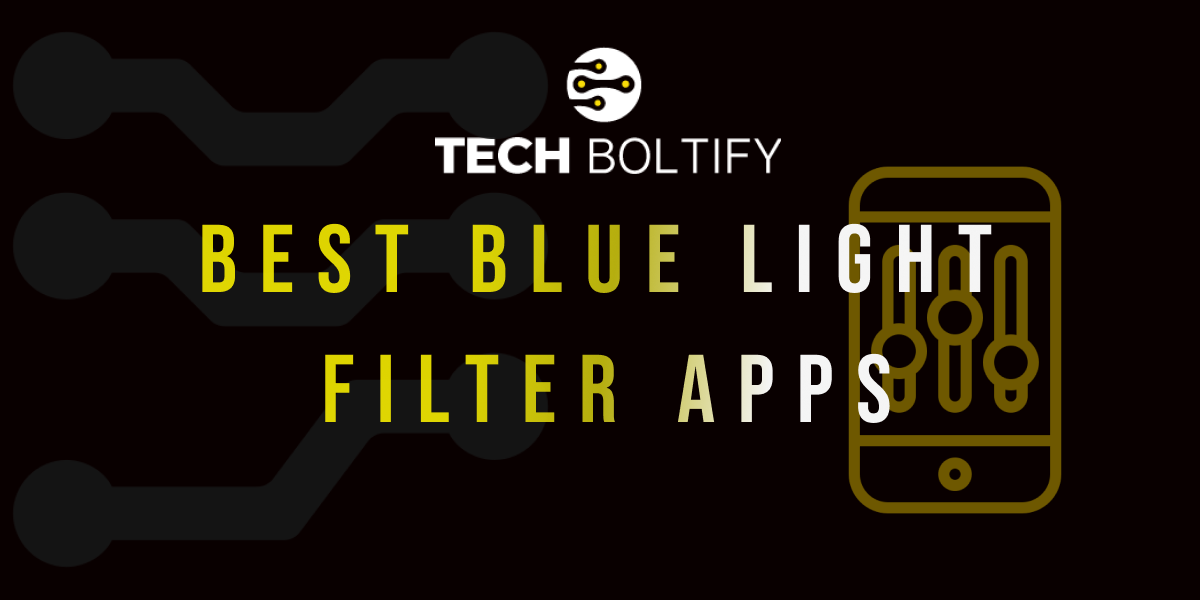Blue light filter apps have become increasingly popular as people look for ways to reduce eye strain and improve sleep quality, especially with the growing use of smartphones, tablets, and computers. These apps are designed to reduce the amount of blue light emitted by your device’s screen, which is believed to have a negative impact on sleep patterns and can cause discomfort when viewed for long periods. By adjusting the screen’s color temperature, blue light filter apps help minimize these effects. However, there are some concerns about using these apps for extended periods. Let’s explore whether there are any risks involved.
Understanding Blue Light and Its Effects
Blue light is a high-energy visible (HEV) light emitted by digital screens, which can be damaging to the eyes when overexposed. Prolonged exposure to blue light, particularly in the evening, has been linked to disrupted circadian rhythms, leading to poor sleep quality. It is also known to contribute to digital eye strain, causing discomfort such as dry eyes, headaches, and blurry vision.
Blue light filter apps reduce this blue light exposure by altering the color temperature of your screen, shifting it to warmer tones, especially at night. This can help reduce strain on the eyes and improve sleep quality by minimizing the impact on melatonin production.
Potential Risks of Using Blue Light Filter Apps for Long Periods
While blue light filter apps are generally safe and helpful, there are a few potential concerns when using them for extended periods:
- Reduced Screen Visibility: Some users report that blue light filters can make the screen appear too warm, which may cause a loss of clarity, making it harder to read or view certain content. If the filter is too strong, it can also distort colors, affecting the overall viewing experience.
- Over-reliance on the Filter: Relying too heavily on a blue light filter app might lead to neglecting other important practices for eye health, such as taking regular breaks. The "20-20-20 rule," where you look away from the screen every 20 minutes for 20 seconds at something 20 feet away, is still necessary to reduce eye strain.
- Not a Complete Solution: Blue light filter apps do help with managing light exposure, but they are not a cure-all for screen-related issues. Long-term usage of digital devices without proper ergonomics or other habits—like adjusting screen brightness, maintaining proper distance, or using anti-glare screens—can still lead to digital eye strain or discomfort, regardless of the blue light filter.
- Potential Impact on Productivity: For those who need to work with high color accuracy, such as graphic designers, photographers, or video editors, using a blue light filter app for prolonged periods might interfere with the true color representation on the screen, leading to inaccurate results.
- Discomfort from Prolonged Warm Colors: Some users find the warm tones of a blue light filter uncomfortable over long periods, especially in bright environments. The filter can make the screen appear too yellow, affecting overall user experience.
Is It Safe to Use Blue Light Filter Apps?
For most people, using a blue light filter app is safe, especially when used to reduce eye strain and promote better sleep quality. There are minimal risks associated with their use as long as the filter is applied in moderation and adjusted to a level that suits the user’s comfort. If you’re experiencing any discomfort or changes in your visual experience, it’s a good idea to adjust the filter settings or take regular breaks from your screen.
Conclusion
In general, there are no significant risks to using a blue light filter app for long periods, as long as you are mindful of how it affects your screen visibility and comfort. They are a useful tool for reducing eye strain and improving sleep, but they should not be relied upon as the sole solution for screen-related issues. Maintaining a balanced approach to screen time, taking regular breaks, and using other ergonomic practices are essential for long-term eye health.





Comments